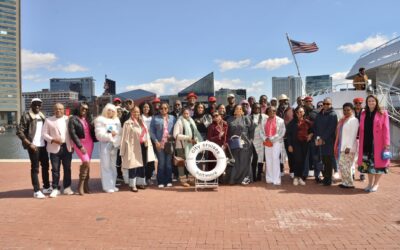Could wiki technology find Osama bin Laden?
Imagine if any Pakistani could send an anonymous text message to the authorities suggesting where to look. Each location could be plotted on a map. The dots would be scattered widely, perhaps, with promising leads indistinguishable from rubbish. But on a given day, a surge of dots might point to the same village, in what could not be coincidence. Troops could be ordered in.
This kind of everyone-as-informant mapping is shaking up the world, bringing the Wikipedia revolution to the work of humanitarians and soldiers who parachute into places with little good information. And an important force behind this upheaval is a small Kenyan-born organization called Ushahidi, which has become a hero of the Haitian and Chilean earthquakes and which may have something larger to tell us about the future of humanitarianism, innovation and the nature of what we label as truth.
After Kenya’s disputed election in 2007, violence erupted. A prominent Kenyan lawyer and blogger, Ory Okolloh, who was based in South Africa but had gone back to Kenya to vote and observe the election, received threats about her work and returned to South Africa. She posted online the idea of an Internet mapping tool to allow people anonymously to report violence and other misdeeds. Technology whizzes saw her post and built the Ushahidi Web platform over a long weekend.
The site collected user-generated cellphone reports of riots, stranded refugees, rapes and deaths and plotted them on a map, using the locations given by informants. It collected more testimony — which is what ushahidi means in Swahili — with greater rapidity than any reporter or election monitor.
When the Haitian earthquake struck, Ushahidi went again into action. An emergency texting number was advertised via radio. Ushahidi received thousands of messages reporting trapped victims. They were translated by a diffuse army of Haitian-Americans in the United States and plotted on a “crisis map.” From a situation room at the Fletcher School of Law and Diplomacy in Medford, outside Boston, Ushahidi volunteers instant-messaged with the United States Coast Guard in Haiti, telling them where to search. When the Chilean earthquake struck, Ushahidi deployed again.
A lot of things could go wrong with this model. People could lie, get the address wrong, exaggerate their situation. But as data collects, crisis maps can reveal underlying patterns of reality: How many miles inland did the hurricane kill? Are the rapes broadly dispersed or concentrated near military barracks?
Ushahidi suggests a new paradigm in humanitarian work. The old paradigm was one-to-many: foreign journalists and aid workers jet in, report on a calamity and dispense aid with whatever data they have. The new paradigm is many-to-many-to-many: victims supply on-the-ground data; a self-organizing mob of global volunteers translates text messages and helps to orchestrate relief; journalists and aid workers use the data to target the response.
Ushahidi also represents a new frontier of innovation. Silicon Valley has been the reigning paradigm of innovation, with its universities, financiers, mentors, immigrants and robust patents. Ushahidi comes from another world, in which entrepreneurship is born of hardship and innovators focus on doing more with less, rather than on selling you new and improved stuff.
Because Ushahidi originated in crisis, no one tried to patent and monopolize it. Because Kenya is poor, with computers out of reach for many, Ushahidi made its system work on cellphones. Because Ushahidi had no venture-capital backing, it used open-source software and was thus free to let others remix its tool for new projects.
Ushahidi remixes have been used in India to monitor elections; in Africa to report medicine shortages; in the Middle East to collect reports of wartime violence; and in Washington, D.C., where The Washington Post partnered to build a site to map road blockages and the location of available snowplows and blowers.
Think about that. The capital of the sole superpower is deluged with snow, and to whom does its local newspaper turn to help dig out? Kenya.
With every new application, Ushahidi is quietly transforming the notion of bearing witness in tragedy. For a very long time, this was done first by journalists in real time, next by victim/writers like Anne Frank and, finally, by historians. But in this instantaneous age, this kind of testimony confronts a more immediate kind: one of aggregate, average, good-enough truths.
“We’re moving beyond the idea that information is completely true or completely false,” said Patrick Meier, a student at Fletcher who directs Ushahidi’s crisis-mapping operation.
So what will it mean to bear witness in the future? They say that history is written by the victors. But now, before the victors win, there is a chance to scream out with a text message that will not vanish. What would we know about what passed between Turks and Armenians, between Germans and Jews, if every one of them had had the chance, before the darkness, to declare for all time: “I was here, and this is what happened to me”?
By ANAND GIRIDHARADAS
The New York Times

![[PRESS RELEASE] AFFIRMATION OF EMERGENCY RULE IN RIVERS STATE THROUGH “AYES AND NAYS”](https://www.nas-int.org/wp-content/uploads/2025/03/National-Assembly-Ayes-and-Nays-400x250.jpeg)

